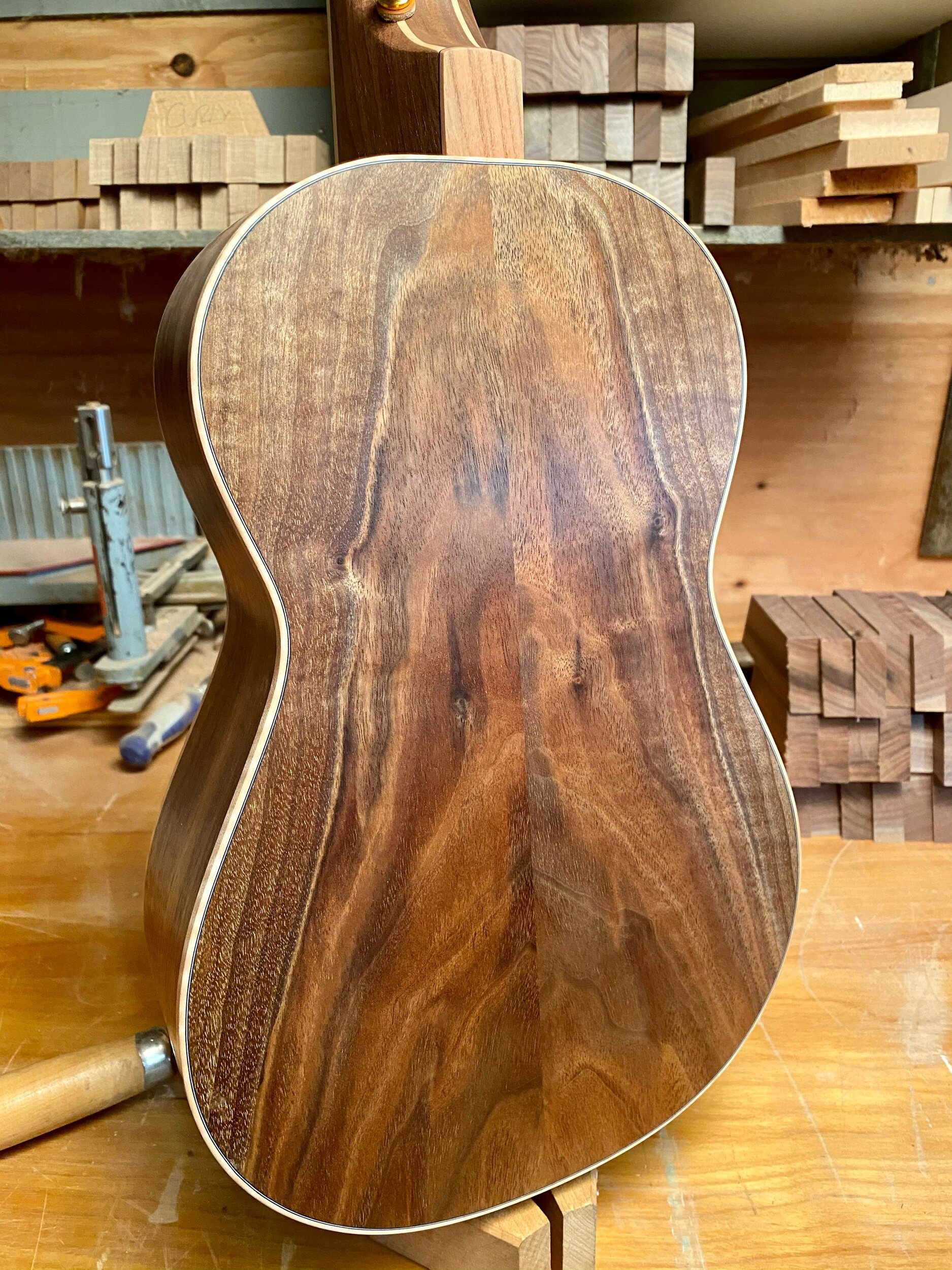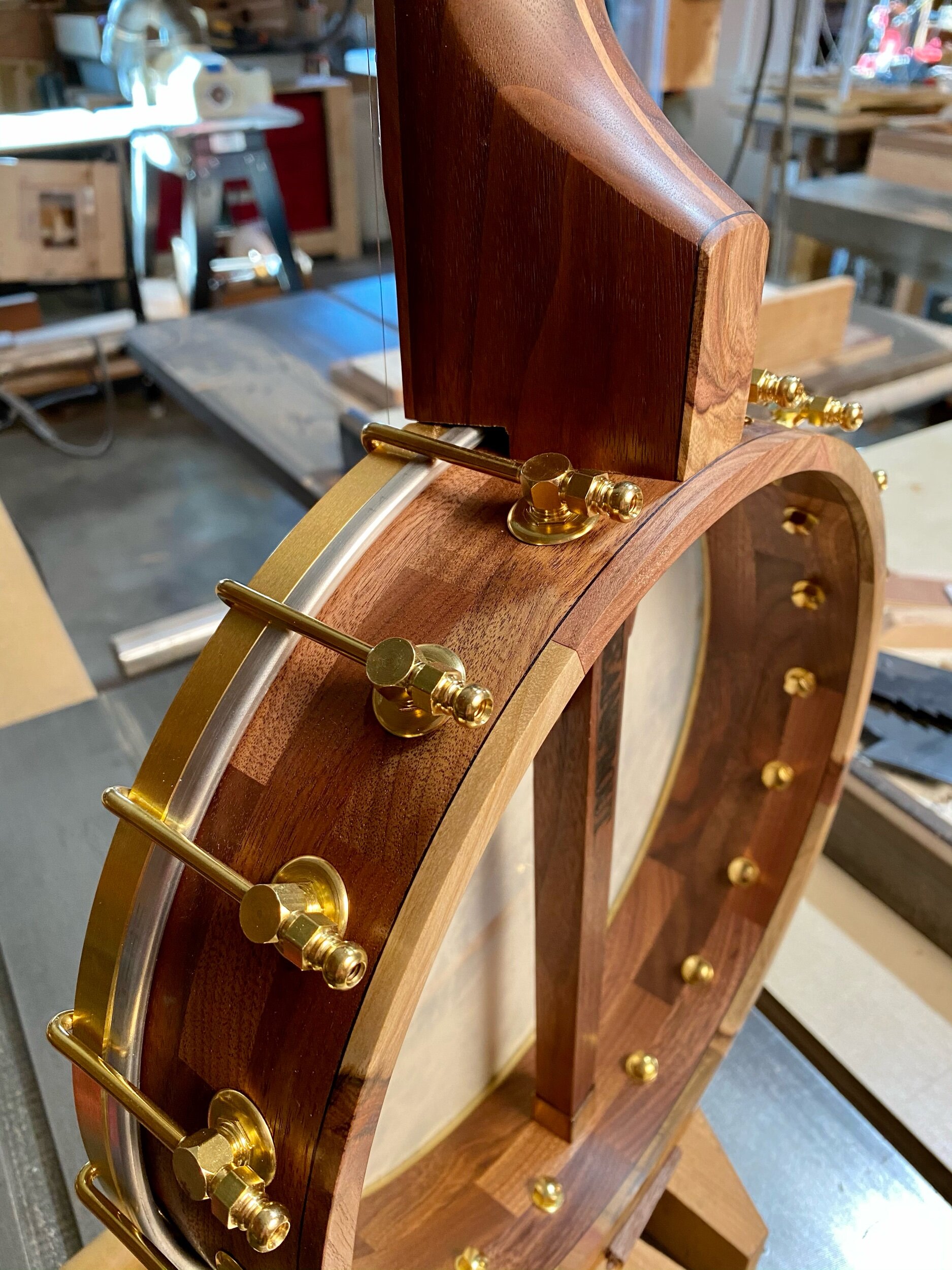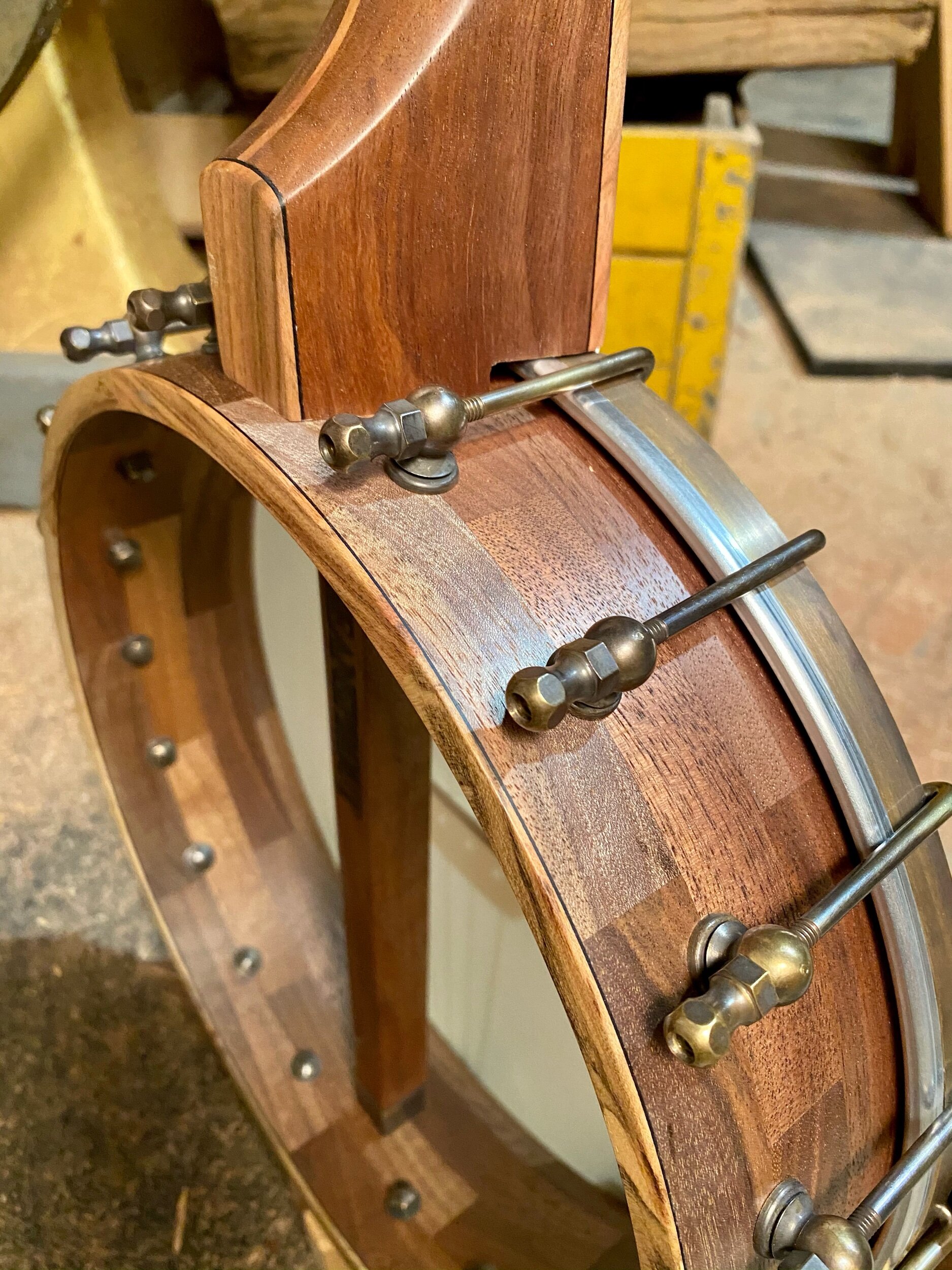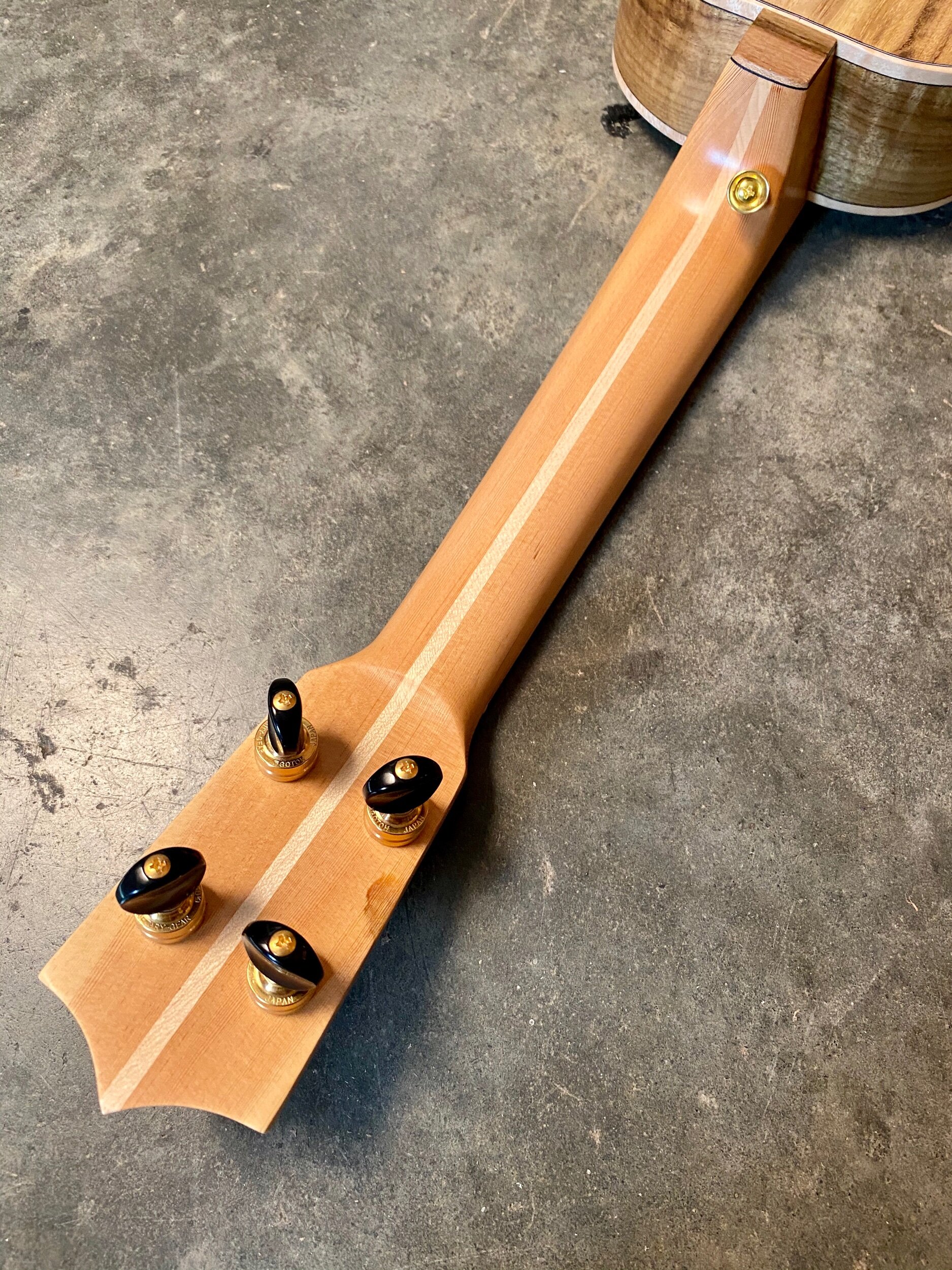I admit it. I’ve had a hard couple of months. Malfunctioning shop equipment, a few uncooperative instruments on the bench and some imperfect customer communications have taken a mental toll on me. (Oh yeah. Wildfires, COVID 19 and the election too.)
I found myself wishing that I didn’t have these distractions so I could just focus on the task at hand. But then I remembered this: doing the job, even when you feel bad and things are not ideal, IS THE JOB. There is no ideal moment except this one.
So today I got up, chopped wood and carried water. I strung this uke up and gave my best for its final day in the shop. And today at least, I won.
The top is blue stained Port Orford Cedar from the Oregon coast, which has a crisp and cheery sound. The back and sides are Mastergrade Myrtle from the same board as my wife Nicole’s ukulele, which we found in Manzanita on her birthday last year. The Pistachio fretboard, headplate and bridge are from California orchards. The old growth fir neck is salvaged from a floor joist in Portland, complete with nail holes plugged with walnut. It has the muted color palette, the wild grain and the tiny natural flaws that embody the wabi-sabi ideal. It is a useful object that is also beautiful, hopefully destined to take someone else’s mind off of whatever is bothering them.
“The novice says to the master, ‘What does one do before enlightenment?’
‘Chop wood. Carry water,’ replies the master.
The novice asks, ‘What, then, does one do after enlightenment?’
‘Chop wood. Carry water.'”











































































































































